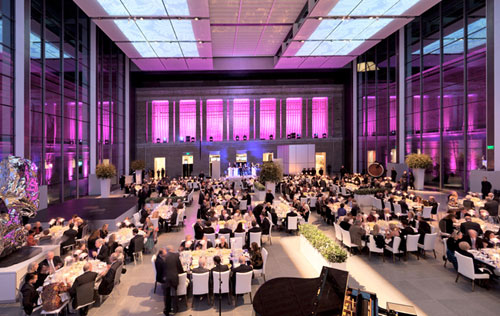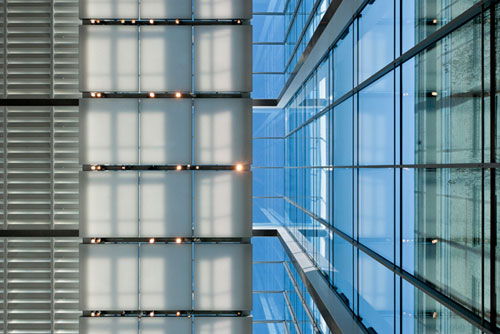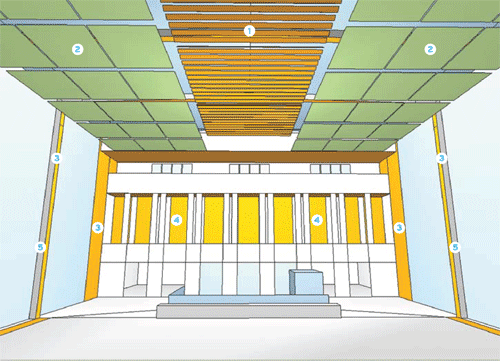Virtual but Vivid
Calm and clear
At Boston's Museum of Fine Arts (MFA), the acoustical issue was not an unorthodox shape but a large volume enclosed by highly sound-reflective finishes. Here, acousticians from Acentech began working with the London-based Foster + Partners in 2003, soon after the concept for the 121,000-square-foot Art of the Americas Wing solidified. Both museum trustees and the architects were concerned that the 63-foot-tall, 12,000-square-foot enclosed courtyard conceived as the addition's centerpiece would be acoustically unsuitable for the varied programming envisioned to take place there. The monumental space - enclosed by glass, stone, and brick - would need to serve as the setting for social functions and special events such as receptions or banquets, and to provide acoustics conducive to listening to a string quartet, a swing band, or a lecture. During normal museum operating hours, designers hoped the courtyard would be calm and contemplative, even though it would house a café.
 |
As part of their analyses, MFA acousticians studied the reflection patterns generated in the courtyard for particular sound sources and listeners. |
 |
The mostly hard-surfaced grand space serves as the setting for a variety of events, including large banquets. The auralizations below depict a banquet at the MFA without sound absorption. This set of auralizations depict a banquet at the MFA with the sound absorption |
 |
Elements that control heat gain and glare incorporate the sound-absorbing material. Photos: Foster + Partners/Nigel Young |
 |
||||||
|
The addition of sound absorption would be key. Without that, the hard-surfaced space would be uncomfortably reverberant, making music muddy and speech unclear. But determining just how much acoustical material would be needed, and deciding how to include it without compromising the courtyard's planar purity, would be tricky.
Acentech started by documenting several atria in and around Boston. The engineers took measurements of the rooms and then calculated or estimated various characteristics, including volume, surface area, and reverberation time.
From those spaces, they chose one - an atrium included in a Moshe Safdie and Associates−designed expansion of the Peabody Essex Museum in Salem - as a benchmark for the MFA. It wasn't excessively loud and was comfortable for conversation and general use. As part of the documentation process, they also discovered that the average absorption coefficient (a ratio of sound absorption to surface area) was the most useful metric for evaluating the existing spaces. It was even more telling than reverberation time. The phenomenon can be attributed to occupant expectations that large rooms be at least somewhat reverberant, says Acentech's Markham. "We want our ears to match our eyes."









